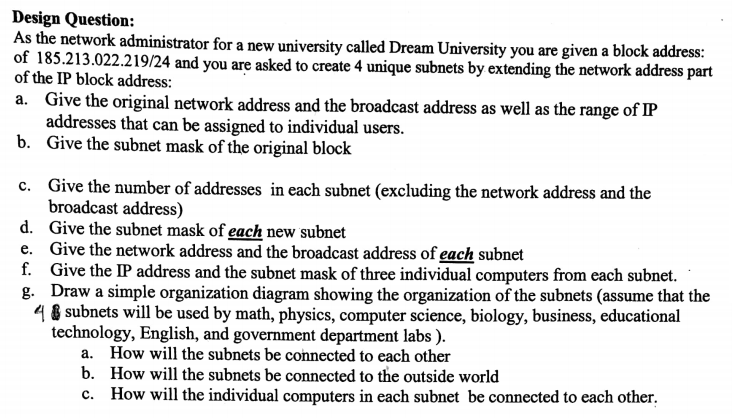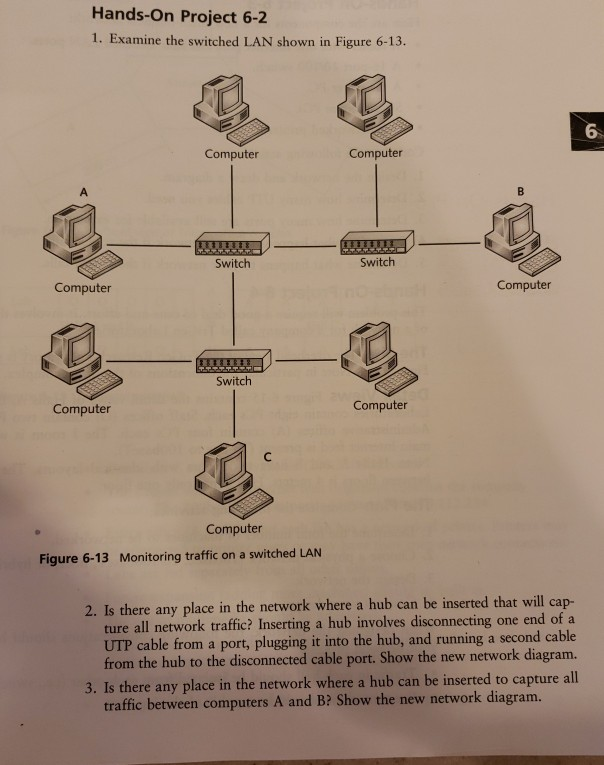Question
A tier-1 ISP connects to all different tier-1 ISPs; a tier-2 ISP connects to only a few of the tier-1 ISPs. Also, a tier-2 ISP
A tier-1 ISP connects to all different tier-1 ISPs; a tier-2 ISP connects to only a few of the tier-1 ISPs. Also, a tier-2 ISP is a consumer of one or more tier-1
14. A POP is a group of 1 or more routers in an ISPs community at which routers in different ISPs can join. NAPs are localized networks at which many ISPs (tier-1, tier-2 and lower-tier ISPs) can interconnect.
15. HFC bandwidth is shared among the users. On the downstream channel, all packets emanate from a unmarried supply, specifically, the top give up. Thus, there are not any collisions in the downstream channel. Sixteen. Ethernet LANs have transmission rates of 10 Mbps, a hundred Mbps, 1 Gbps and 10 Gbps. For an X Mbps Ethernet (where X = 10, 100, 1,000 or 10,000), a consumer can constantly transmit at the price X Mbps if that user is the only person sending facts. If there are a couple of active user, then every user can't constantly transmit at X Mbps.
17. Ethernet maximum commonly runs over twisted-pair copper twine and "skinny" coaxial cable. It can also run over fibers optic links and thick coaxial cable.
18. Dial up modems: as much as 56 Kbps, bandwidth is devoted; ISDN: up to 128 kbps, bandwidth is dedicated; ADSL: downstream channel is .Five-eight Mbps, upstream channel is up to 1 Mbps, bandwidth is devoted; HFC, downstream channel is 10-30 Mbps and upstream channel is generally less than some Mbps, bandwidth is shared.
19.The postpone components are processing delays, transmission delays, propagation delays, and queuing delays. All of those delays are constant, except for the queuing delays, that are variable.
20. Five regular tasks are error manipulate, drift control, segmentation and reassembly, multiplexing, and connection setup. Yes, those responsibilities may be duplicated at extraordinary layers. For example, mistakes control is frequently provided at multiple layer.
21.The five layers within the Internet protocol stack are - from pinnacle to bottom - the software layer, the shipping layer, the community layer, the link layer, and the bodily layer. The predominant duties are outlined in Section 1.7.1.
22.Application-layer message: records which an application desires to send and passed onto the delivery layer; shipping-layer section: generated with the aid of the delivery layer and encapsulates software-layer message with shipping layer header; community-layer datagram: encapsulates transport-layer segment with a network-layer header; link- layer body: encapsulates community-layer datagram with a hyperlink-layer header.
23.Routers manner layers 1 thru 3. (This is a touch little bit of a white lie, as present day routers every so often act as firewalls or caching components, and process layer four as properly.) Link layer switches system layers 1 thru 2. Hosts method all five layers.


Design Question: As the network administrator for a new university called Dream University you are given a block address: of 185.213.022.219/24 and you are asked to create 4 unique subnets by extending the network address part of the IP block address: a. Give the original network address and the broadcast address as well as the range of IP addresses that can be assigned to individual users. Give the subnet mask of the original block b. c. Give the number of addresses in each subnet (excluding the network address and the broadcast address) d. Give the subnet mask of each new subnet e. Give the network address and the broadcast address of each subnet f. Give the IP address and the subnet mask of three individual computers from each subnet. g. Draw a simple organization diagram showing the organization of the subnets (assume that the 48subnets will be used by math, physics, computer science, biology, business, educational technology, English, and government department labs). a. How will the subnets be connected to each other b. How will the subnets be connected to the outside world c. How will the individual computers in each subnet be connected to each other.
Step by Step Solution
There are 3 Steps involved in it
Step: 1

Get Instant Access to Expert-Tailored Solutions
See step-by-step solutions with expert insights and AI powered tools for academic success
Step: 2

Step: 3

Ace Your Homework with AI
Get the answers you need in no time with our AI-driven, step-by-step assistance
Get Started


